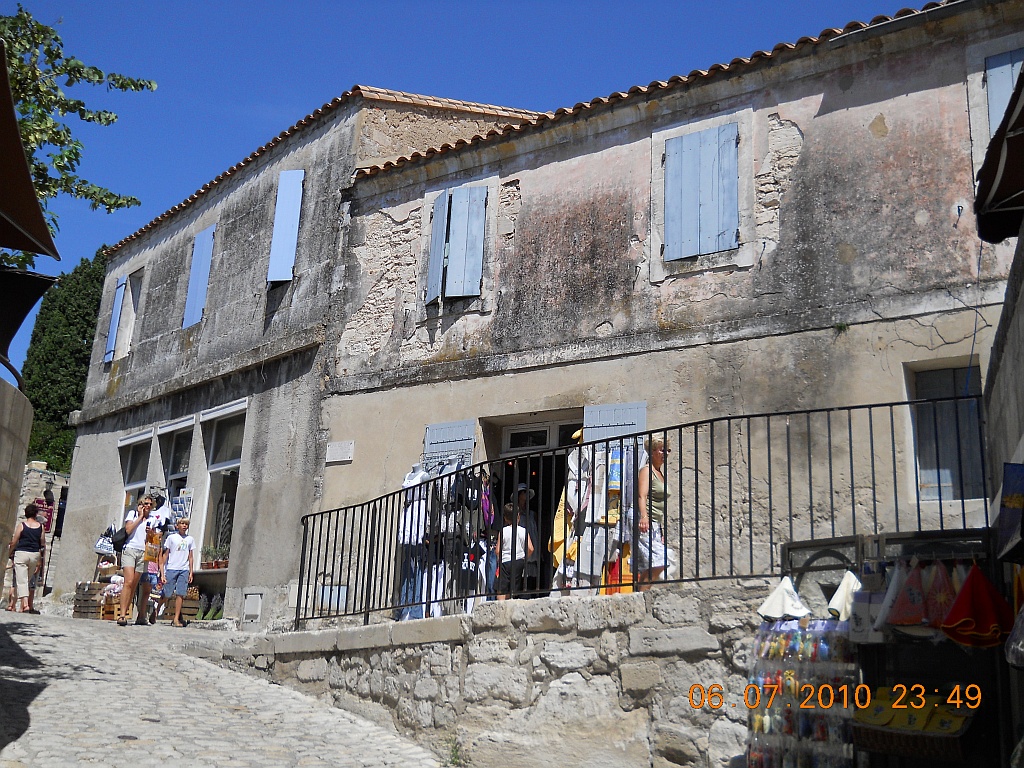
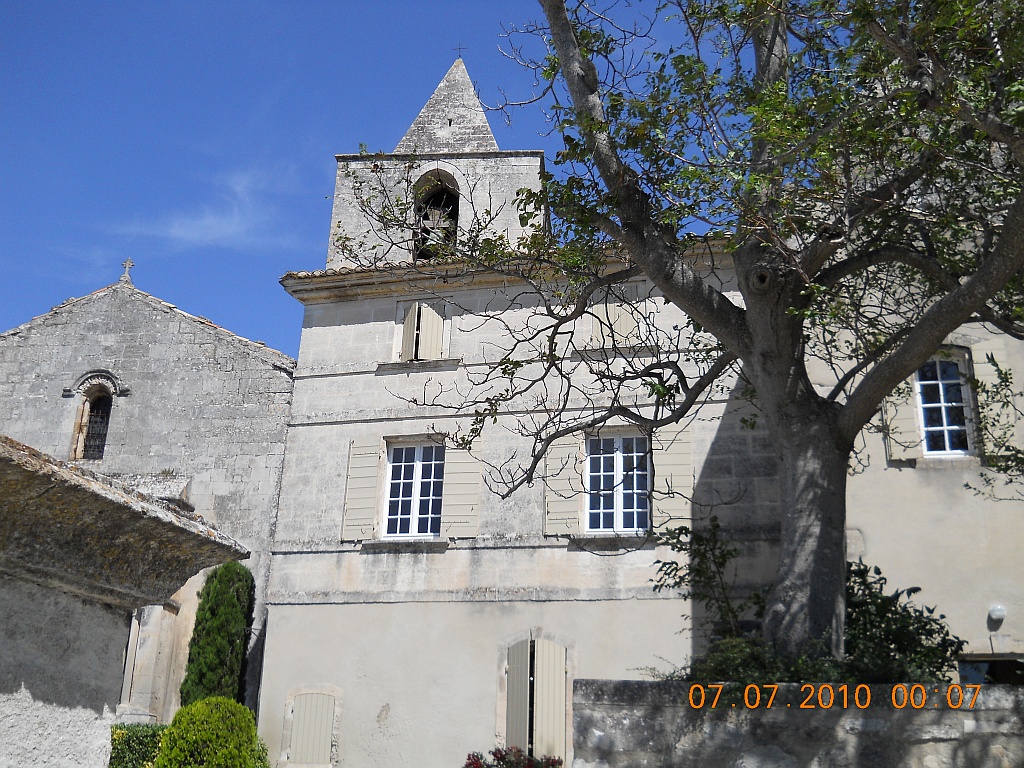


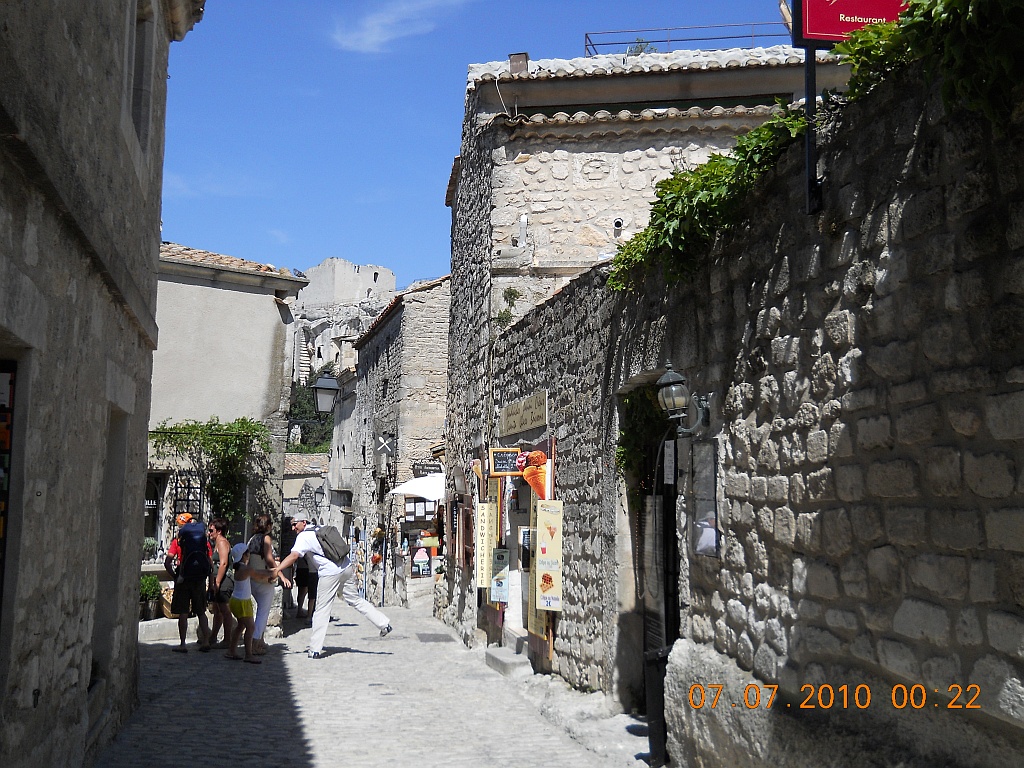
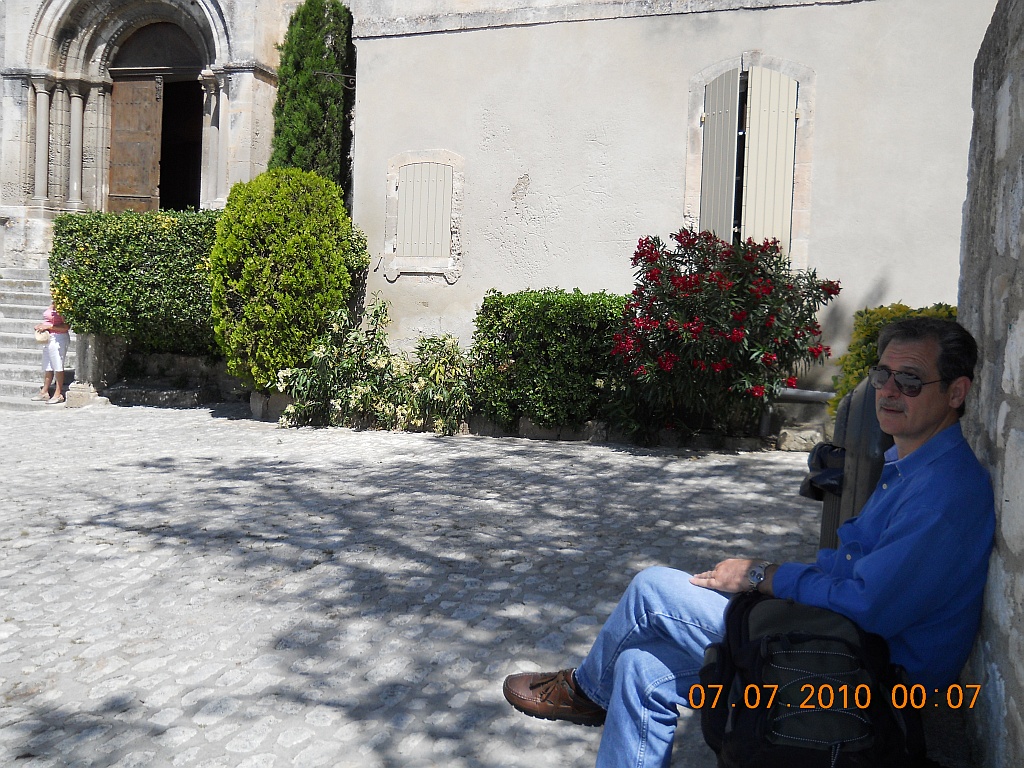

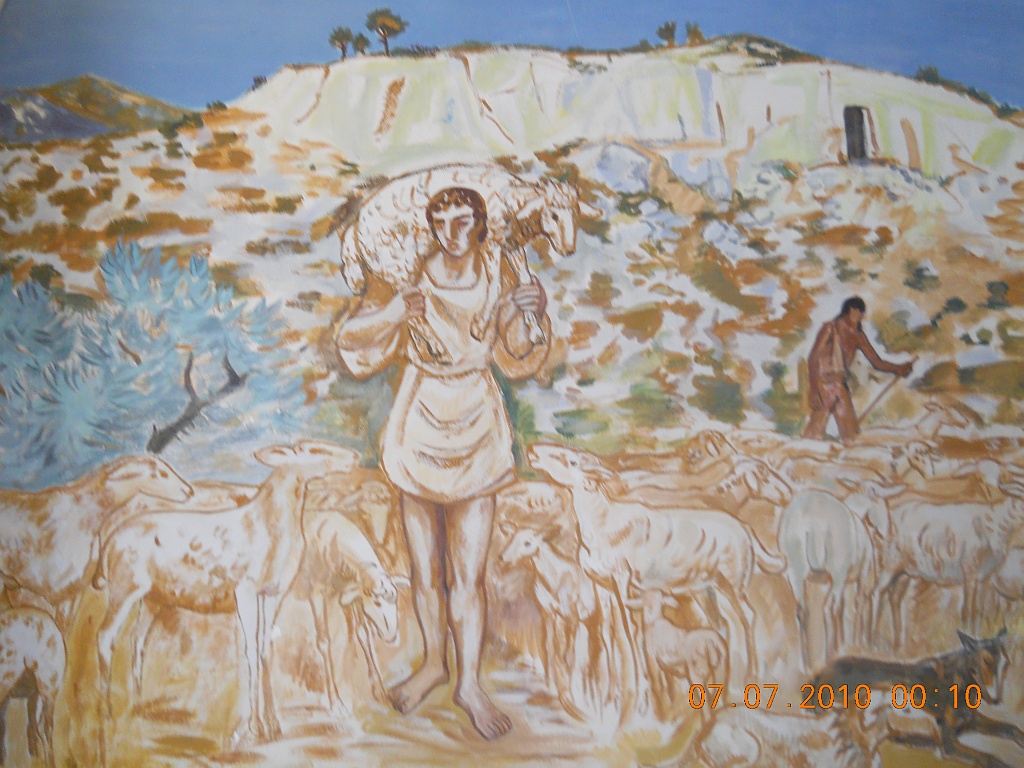
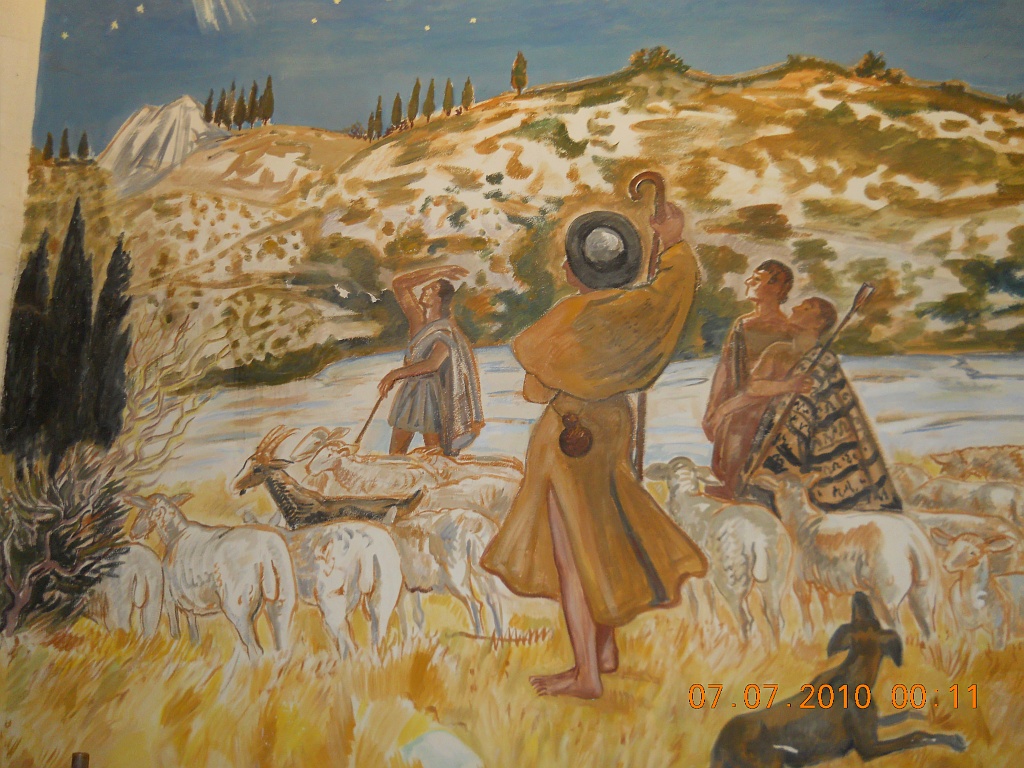
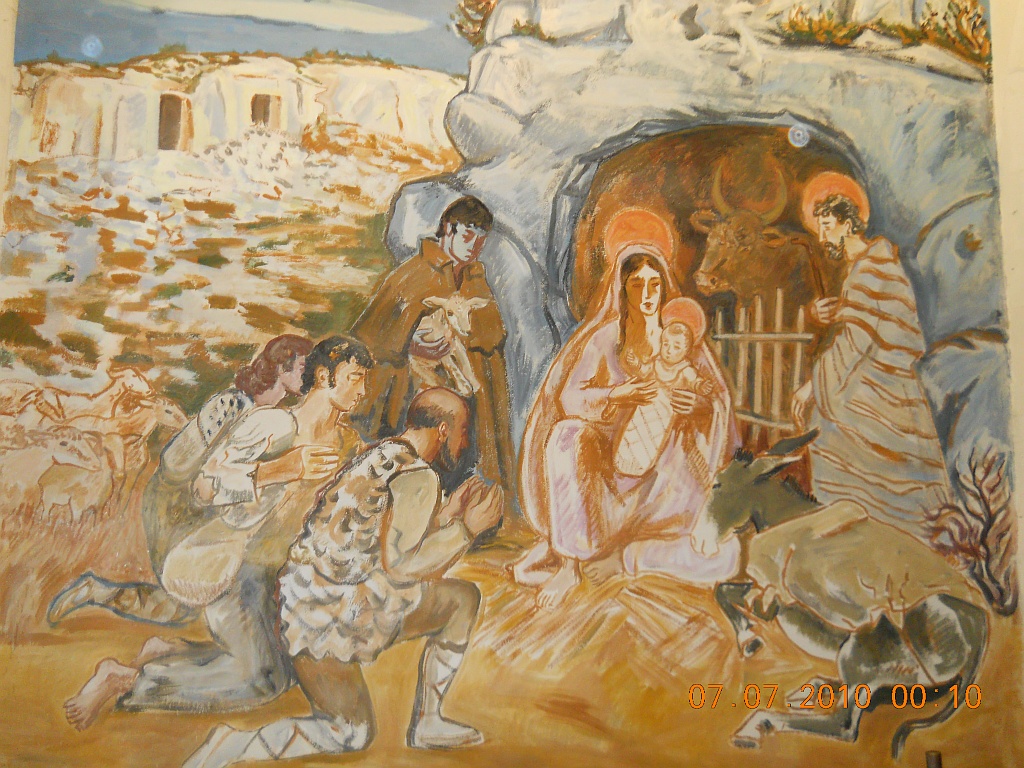
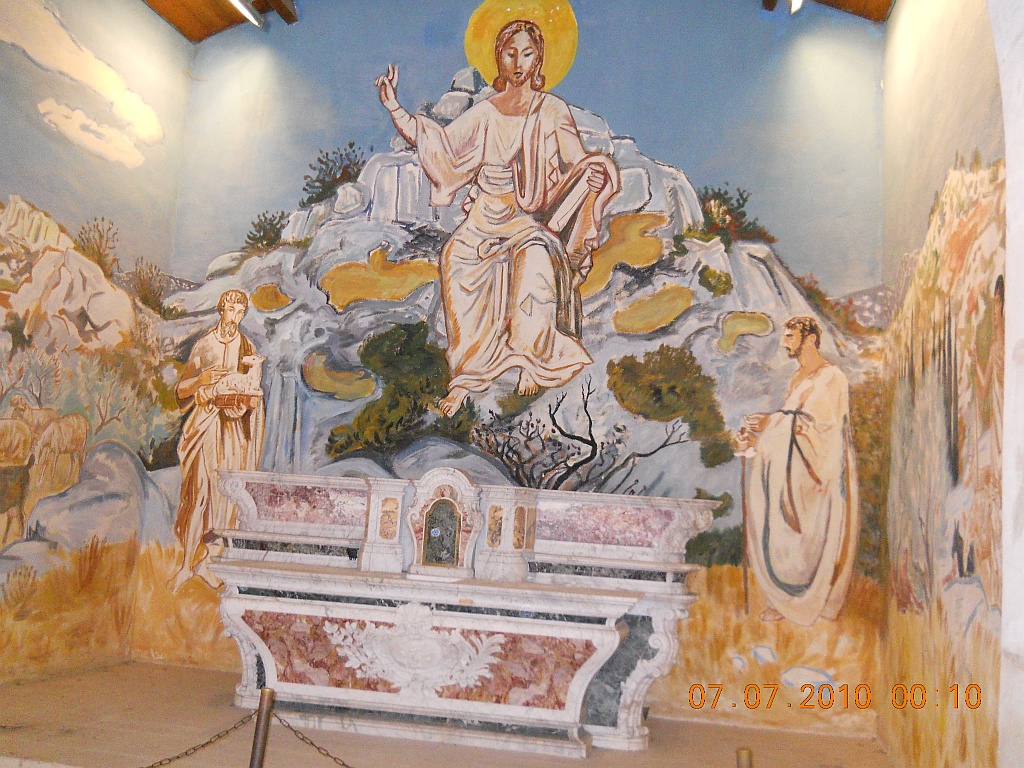
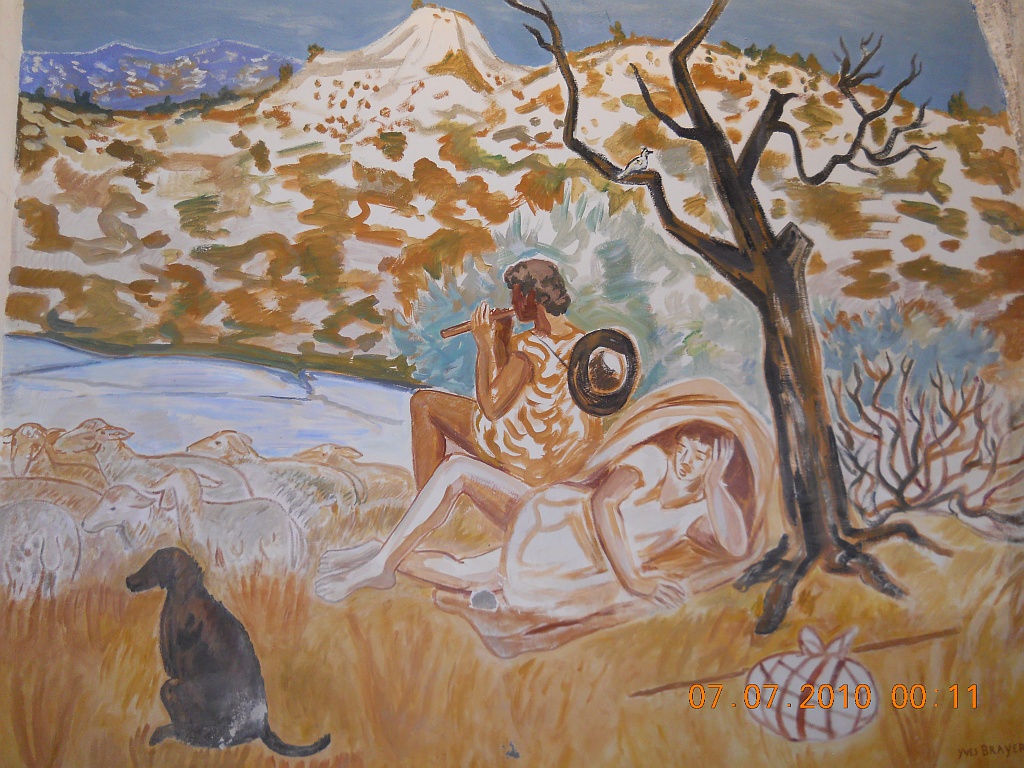
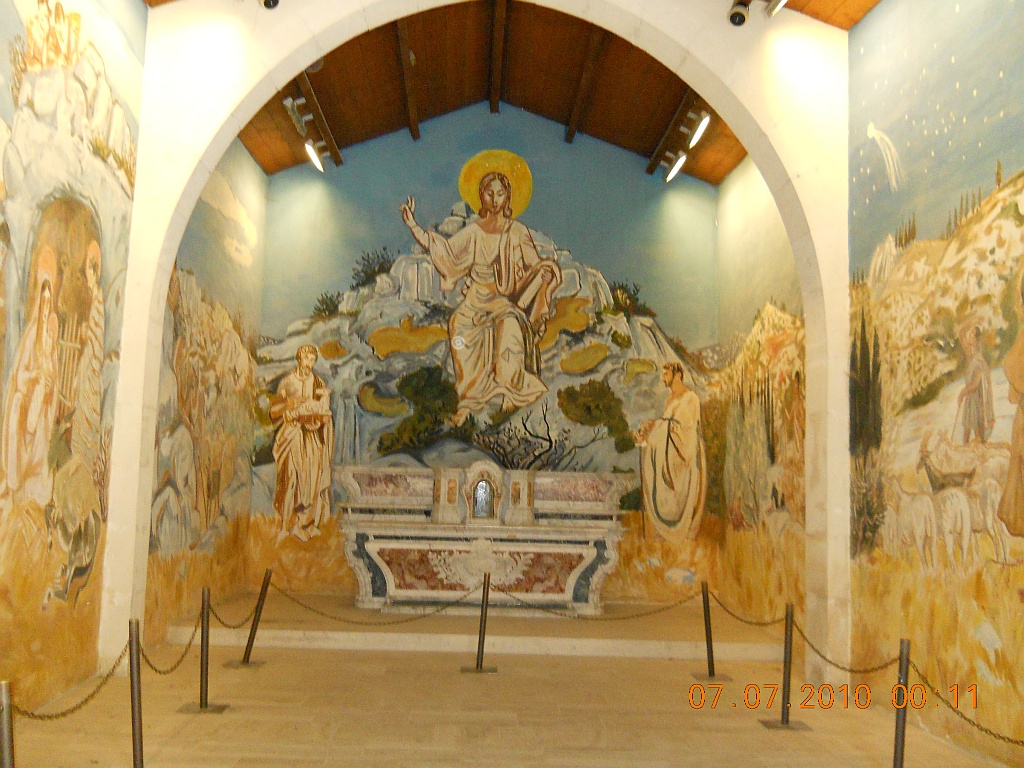
Les Baux-de-Provence has a spectacular position in the Alpilles
mountains set atop a rocky outcrop and crowned with a ruined castle.
The defensive possibilities of Les Baux led to the site being
settled early on in human history with habitation dating back as far as
6000 BC. During the Middle
Ages it became the seat of a powerful feudal lordship that
controlled 79 towns and villages in the vicinity. The lords
of
Baux sought control of Provence for many years. They claimed
ancestry from the Magus king Balthazar and placed
the Star of Bethlehem on their coat of arms.
Although the lords of Baux were deposed in the 12th century the great castle at Les Baux became renowned for its court, famed for a high level of ornateness, culture and chivalry before its end in the 15th century with the death of the last princess of Baux, Alice of Baux.
Les Baux was later joined, along with Provence, to the French crown. It became a centre for Protestantism and its unsuccessful revolt against the crown led Cardinal Richelieu in 1632 to order that the castle and its walls should be demoished.
The town was granted in 1642 to the Grimaldi family, rulers of Monaco, as a French marquisiate. To this day the title of Marquis des Baux remains with the Grimaldis, although administratively the town is entirely French. The title is traditionally given to the heir to the throne of Monaco. Princess Caroline of Monaco uses the style Marquise des Baux, but, being a French title it can only pass through a male line under Salic law. It lapsed on the death of her grandfather Prince Louis II, the last male in a direct line.